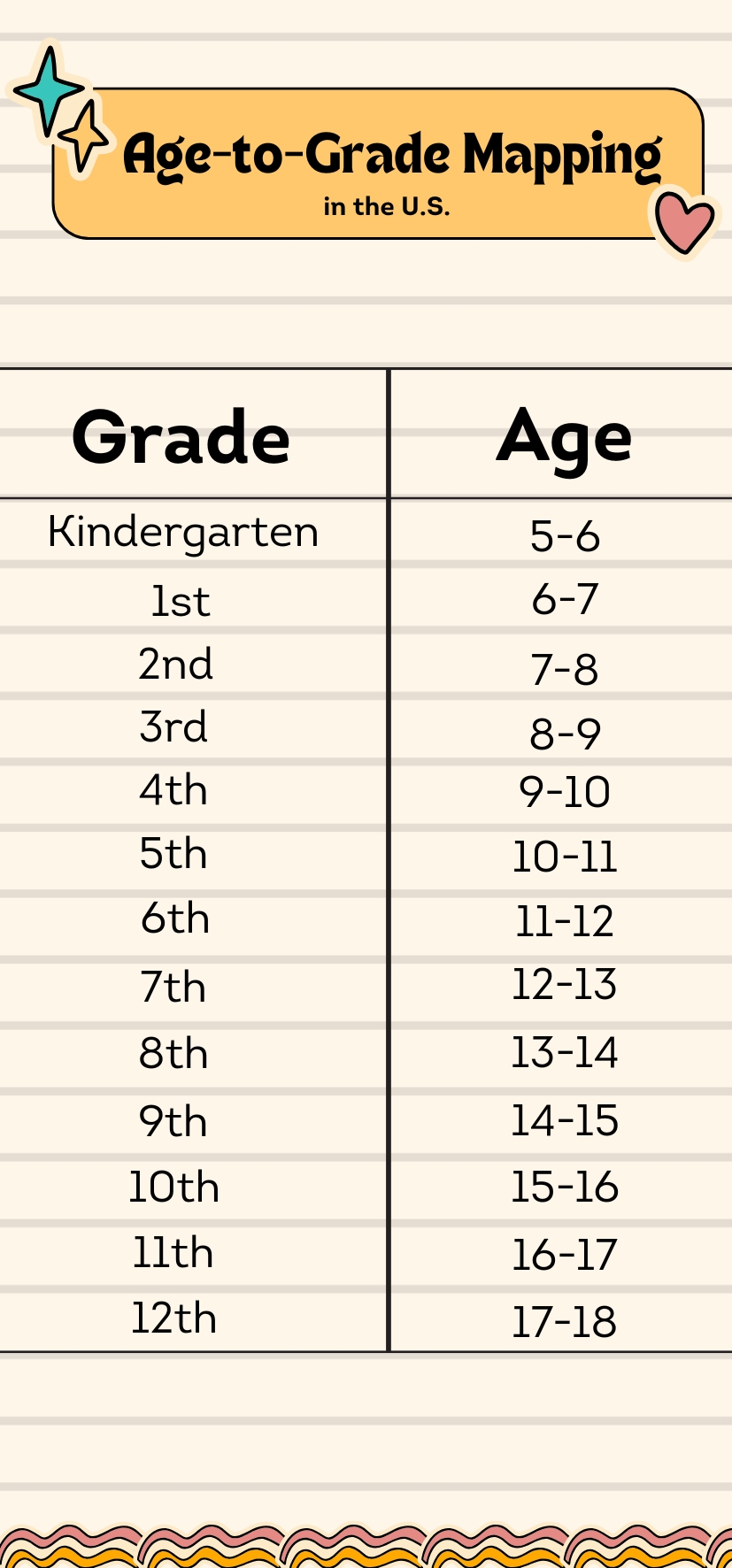
Share Post:
Age-grade alignment helps parents and educators make informed decisions about a student’s readiness, both academically and socially. A 13-year-old is usually placed in either 7th or 8th grade, depending on several variables.
Birthdate cutoffs, academic performance, retention, acceleration, and homeschooling practices all play a role in determining grade placement.
Let us take a look at what there is to know.
Table of Contents
ToggleStandard U.S. Age-to-Grade Mapping
Most students across the United States follow a structured path based on age when entering school. Formal education typically begins with kindergarten, around age 5.
Although this system offers a general framework, it is not inflexible. Shifts occur due to factors such as state regulations, retention, acceleration, or non-traditional education choices.
To better understand where a 13-year-old might fall in this system, it helps to review the expected age range for each stage of school.
- Kindergarten: 5–6 years old
- 1st: 6–7 years old
- 2nd: 7–8 years old
- 3rd: 8–9 years old
- 4th: 9–10 years old
- 5th: 10–11 years old

Middle School (Grades 6–8) covers ages 11 to 14. This is often the phase where 13-year-olds are placed, depending on their progress and age at school entry.
- 6th: 11–12 years old
- 7th: 12–13 years old
- 8th: 13–14 years old
High School (Grades 9–12) begins when students are around 14 and continues through age 18:
- 9th (Freshman year): 14–15 years old
- 10th (Sophomore year): 15–16 years old
- 11th (Junior year): 16–17 years old
- 12th (Senior year): 17–18 years old
Age alignment generally follows this timeline, but it’s not uncommon for a 13-year-old to land in either 7th or 8th grade.
Factors like an early or late birthday, grade repetition, or acceleration can cause students to fall outside the typical age range.
Middle school years especially reveal these variations more clearly than other grade spans, creating a noticeable difference in age among peers even within the same classroom.
Key Factors That Affect Grade Placement
Grade placement involves more than age alone. While a 13-year-old is often expected to be in 7th or 8th grade, several academic rules and parental choices influence that position.
Differences in state laws, school readiness, academic performance, and educational setting can all shift the expected trajectory.
State Cutoff Dates

Public school districts rely on specific cutoff dates for kindergarten enrollment, commonly around September 1.
A child must turn 5 before that date to begin kindergarten in that year. If a birthday falls just after the cutoff, the child must wait until the next academic year, beginning school at age 6 instead of 5.
- A September 2 birthday in a state with a September 1 cutoff means the child starts school a year later.
- Children born just before the cutoff may be the youngest in class.
- Children born just after the cutoff may be nearly a year older than classmates.
The single difference at the start of a child’s academic life often leads to a noticeable age gap by middle school.
Redshirting & Delayed Enrollment
Delaying school entry by a year—commonly called redshirting—is a decision some parents make to give children extra time for emotional or social development.
Boys are more frequently delayed due to generalizations about slower maturity rates.
- Perceived immaturity or social struggles.
- Desire for competitive advantage in academics or sports.
- Advice from preschool educators or pediatricians.
Such decisions can result in a 13-year-old still being in 6th or early 7th grade, depending on how the delay was implemented.
Grade Retention or Skipping

Academic readiness doesn’t always line up with age. Some students repeat a grade due to learning gaps or emotional challenges, while others skip ahead due to rapid academic progress. Both paths affect where a 13-year-old might be placed in school.
- A student repeating 6th grade after struggling with core subjects.
- A student skipping 7th grade after excelling in multiple subjects and passing placement exams.
- A student held back due to frequent school absences or behavioral challenges.
While these cases are less common than delayed starts, they can strongly affect class composition and student confidence.
Homeschooling Flexibility

Homeschooled students often follow a curriculum designed to match their pace rather than their birthdate. Grade levels become more of a guideline than a rule, especially in subjects where a student excels or struggles.
- A 13-year-old working at 8th-grade level in math and 6th-grade level in reading.
- A student moving into high school coursework in science while still finishing middle school writing.
- A homeschool curriculum that combines all levels, allowing broader age ranges in one lesson plan.
Such flexibility leads to a customized educational path that doesn’t always align with traditional structures.
In the end, a 13-year-old might be in different grades based on a complex combination of these factors. No single rule dictates where a student must be, and multiple correct answers can exist depending on the situation.
The Bottom Line
Age helps provide a general reference point, but it shouldn’t be viewed as the only measure of where a student belongs academically.
What matters more is the alignment between the student’s developmental needs and the academic environment.
Parents should evaluate emotional maturity, academic ability, and social readiness when making decisions about grade placement.
Tailoring the experience to fit the student often leads to better outcomes in both education and personal growth.
Related Posts:
- What Are the Standard Grade Levels by Age in the US?
- Why Game-Based Learning Is Key to Student Engagement…
- Why More Students Should Embrace Asynchronous…
- Changing Careers After 40 - Why Education Matters…
- Why SplashLearn is a Game-Changer for K-5 Math Education
- Is That School Information Legit? Why You Need to Be…











